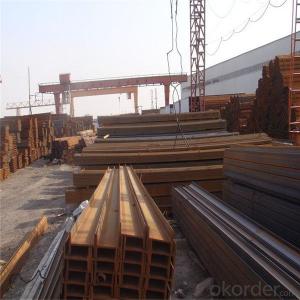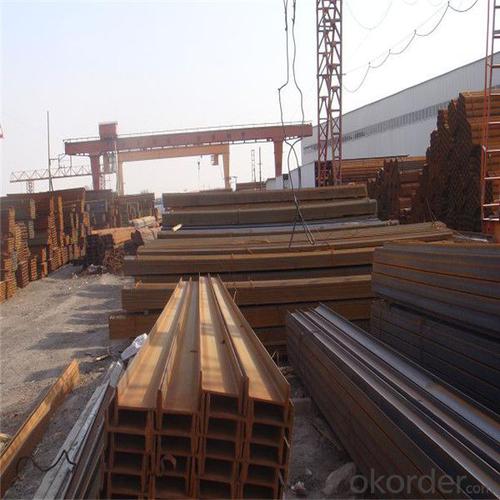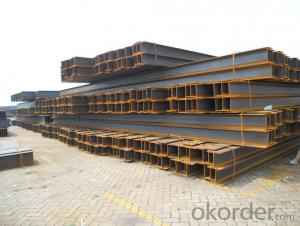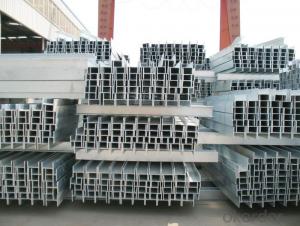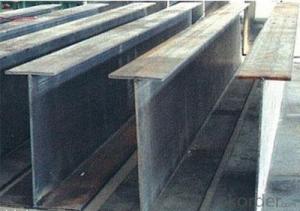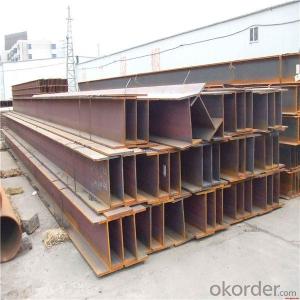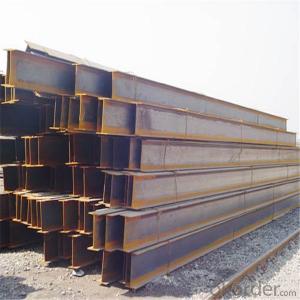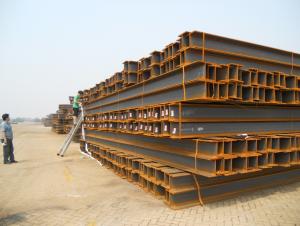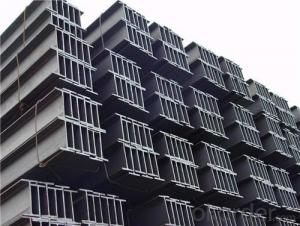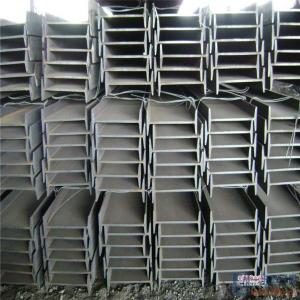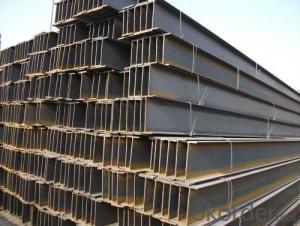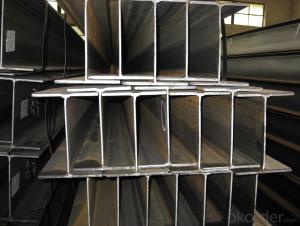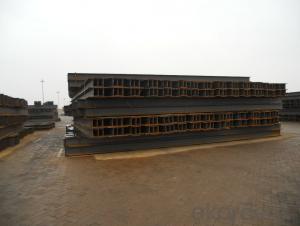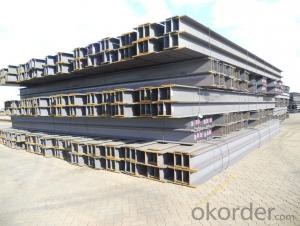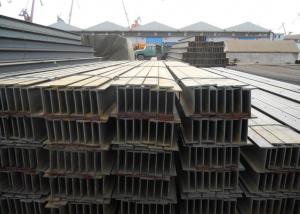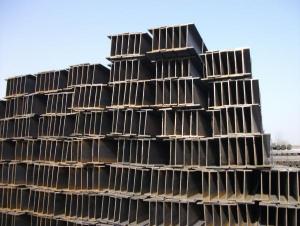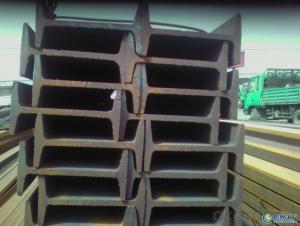GB Standard H Section Steel from China with Good Price
- Loading Port:
- Tianjin
- Payment Terms:
- TT OR LC
- Min Order Qty:
- 500 m.t
- Supply Capability:
- 10000 m.t/month
OKorder Service Pledge
OKorder Financial Service
You Might Also Like
Specification
Quick Details
Place of Origin: | Jiangsu, China (Mainland) | Grade: | SS400, SS400,ST37-2, A36, S235JR, Q235 | Technique: | Hot Rolled |
Thickness: | 8mm | Application: | construction | Length: | 6m-16m |
Standard: | JIS, ASTM,BS,EN | Flange Width: | 50-34mm | Flange Thickness: | 7-34mm |
Web Width: | 100-900mm | Web Thickness: | 5-30mm | Brand Name: | JZZHD |
Model Number: | 350mm*175mm*7mm*11mm | Name: | Steel h beam structure material/ construction steel | Certificate: | SGS,ISO,CE,TUV |
We can provide qualify goods,competitive price and speedy delivery.
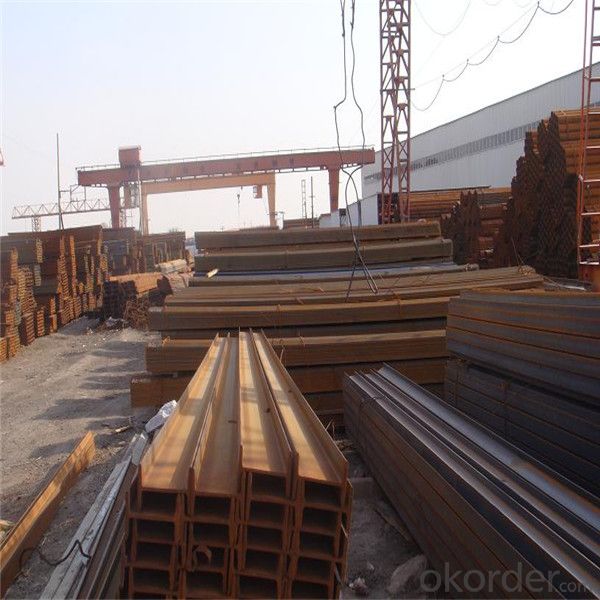
Products Description
Description | High Frenquency Thin-walled H Beam | |
Product Name | H Beam | |
Specification | Height:75-500mm Width:50-250mm | |
Standard | GB700-1998,GB/T1591-1994 | |
Material | Q235B,Q345B | |
Application | a. Bridge and post structures in industry and civil use of steel construction. | |
Certificates | ISO,SGS,BV,TUV,Lloyd | |
MOQ | 20 tons or according to customers’ requirement. | |
Port of Delivery | Tianjin Port of China | |
Remarks | We can provide qualify goods,competitive price and speedy delivery |
Packaging & Delivery
Packaging Details: | Packed with waterproof paper and steel banding. |
Delivery Detail: | 15-25 |
FAQ
1. How can I get some samples?
We are honored to offer you samples. New clients are expected to pay for the courier cost. The samples are free for you.
2 Do you have any certificates?
Our products passed inspection of SGS, FDA, and CE Quality is priority! Every worker keeps the QC from the very beginning to the very end, Quality control department especially responsible for quality checking in each process.
3 Can your factory print or emboss my logo on the goods?
Yes, we can print or emboss the logo on the goods or their packing box.
4 What information should I let you know if I want to get a quotation?
1) The specification of products (length x width x thickness);
2) The temper and alloy.
3) The final product you will use to be made
4 It will be better if you can show us the pictures or design sketch. Samples will be best for clarifying. If not, we will recommend relevant products with details for reference.We usually produce goods based on customers
Samples or based on customers’ picture, logo, sizes etc.
- Q: Can steel H-beams be used for exhibition halls or convention centers?
- Yes, steel H-beams can be used for exhibition halls or convention centers. They are commonly used in the construction of large-scale structures due to their strength and load-bearing capabilities. Steel H-beams provide structural support and stability, making them an ideal choice for such expansive spaces.
- Q: Can steel H-beams be customized based on specific project requirements?
- Yes, steel H-beams can be customized based on specific project requirements. H-beams are commonly used in construction projects due to their strength and versatility. They can be manufactured in various sizes, lengths, and dimensions to meet the specific needs of a project. Additionally, the steel composition and thickness can also be customized to ensure the desired strength and durability. By working with a reputable steel manufacturer or supplier, project designers and engineers can collaborate to customize H-beams based on the specific requirements of the project, ensuring an optimal and efficient structural solution.
- Q: Can steel H-beams be used for warehouse structures?
- Yes, steel H-beams can be used for warehouse structures. Steel H-beams are widely used in construction due to their strength, durability, and load-bearing capabilities, making them suitable for supporting the weight and maintaining the integrity of a warehouse structure.
- Q: How should the steel H columns in the middle of the gable be placed?
- The surface of the mountain wall is wide and high, and the wind load is great. The wind load, the wall itself is unable to resist and needs the steel column to bear, so this column is called "wind resistant column"
- Q: What is the lifespan of steel H-beams?
- Several factors can influence the lifespan of steel H-beams, including the quality of the steel, usage conditions, and maintenance levels. Generally, steel H-beams are designed for durability and can be used in various structural applications. If manufactured and maintained correctly, steel H-beams can last for several decades or even longer. Steel's high strength and structural integrity enable it to endure heavy loads, harsh weather conditions, and other external factors that may degrade the material over time. However, it is crucial to consider that several factors can contribute to the deterioration of steel H-beams. These factors include exposure to corrosive elements like moisture, chemicals, and saltwater, as well as structural overload, excessive vibrations, and improper installation or handling. Regular inspections and maintenance play a significant role in identifying signs of corrosion, fatigue, or structural damage that could affect the beams' lifespan. In conclusion, the lifespan of steel H-beams can be extensive if they are manufactured properly, maintained correctly, and used within their design limitations. By implementing appropriate maintenance practices and safeguarding the beams from adverse conditions, it is possible to significantly extend their lifespan.
- Q: How do steel H-beams contribute to energy-efficient buildings?
- Steel H-beams play a crucial role in constructing energy-efficient buildings due to their unique structural properties and sustainability benefits. Firstly, H-beams are known for their exceptional strength-to-weight ratio, allowing for the creation of large, open spaces without the need for excessive structural support. This feature enables architects to design buildings with more natural light and better airflow, reducing the need for artificial lighting and ventilation systems and ultimately decreasing energy consumption. Moreover, steel H-beams can be fabricated to precise dimensions, ensuring accurate assembly and minimizing waste during construction. This not only saves resources but also reduces the energy required for manufacturing and transportation of materials. Additionally, steel is a highly recyclable material, making H-beams a sustainable choice for construction. The recycling process requires significantly less energy compared to producing new steel, reducing greenhouse gas emissions and conserving natural resources. Beyond their structural benefits, steel H-beams also contribute to energy efficiency through their thermal properties. Steel is a good conductor of heat, which allows for efficient transfer and distribution of thermal energy within a building. This feature enables better insulation and temperature control, reducing the reliance on heating and cooling systems and consequently reducing energy consumption. Another advantage of steel H-beams is their durability and resistance to environmental factors such as fire, earthquakes, and pests. This durability ensures the longevity of energy-efficient buildings, reducing the need for frequent repairs and replacements, which in turn saves energy and resources. In conclusion, steel H-beams contribute to energy-efficient buildings by providing a strong, lightweight, and sustainable structural solution. Their ability to create open and spacious designs, accurate fabrication, thermal efficiency, and durability all contribute to reducing energy consumption and promoting sustainability in construction.
- Q: Can steel H-beams be used for overhead crane systems?
- Yes, steel H-beams can be used for overhead crane systems. H-beams are commonly used as structural supports in construction and industrial applications, including overhead crane systems. Their strong and durable nature makes them well-suited for supporting the weight of cranes and the loads they carry.
- Q: Are steel H-beams suitable for use in the construction of cultural centers or theaters?
- Yes, steel H-beams are suitable for use in the construction of cultural centers or theaters. Steel H-beams are widely used in construction projects due to their high strength-to-weight ratio, durability, and ability to withstand heavy loads. In the case of cultural centers or theaters, where large open spaces and long spans are often required, steel H-beams provide the necessary structural support while allowing for flexible design options. Additionally, steel H-beams are fire-resistant and can be easily fabricated and installed, making them a popular choice for such projects.
- Q: How do Steel H-Beams perform in seismic or high-wind conditions?
- Steel H-Beams are known for their excellent performance in seismic or high-wind conditions. Due to their strong structural integrity and flexibility, they can effectively absorb and distribute forces generated by earthquakes or strong winds. This makes them highly resistant to damage and deformation, ensuring the safety and stability of buildings and structures in such conditions.
- Q: How to process arc H steel?
- See you is an arc in which direction the ah, if it is directly under the arc arc flange flange welded web on the line, the web is on the web flange welding arc. There are two directions are arc. Hope to help you.
Send your message to us
GB Standard H Section Steel from China with Good Price
- Loading Port:
- Tianjin
- Payment Terms:
- TT OR LC
- Min Order Qty:
- 500 m.t
- Supply Capability:
- 10000 m.t/month
OKorder Service Pledge
OKorder Financial Service
Similar products
Hot products
Hot Searches
Related keywords
